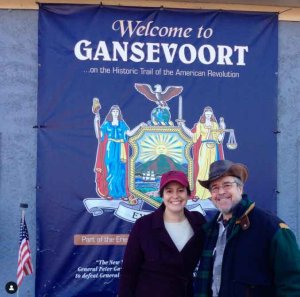A WORLD AT WAR
To fully understand the importance of D-Day we must first explain the events leading up to it.
World War Two started in 1939 when Adolph Hitler unleashed his armies on the European Continent.
The first to fall was Poland. The Poles were no match for Hitler’s modern war machine, capitulating in a matter of weeks. Following that swift victory his eyes were now set on Germany’s historic foe France. It would be payback time for the failed attempt to defeat the French in the First World War.
In a massive three prong offensive, the Armies of The Reich demolished the Netherlands, Belgium, and France in a stunning six-week campaign.
Three hundred thousand soldiers were trapped on the French Coast at Dunkirk. In an extraordinary effort the entire British Expeditionary Forces along with many of their French Counterparts, were evacuated across the English Channel to fight another day. It would be four long years before they would return. When they did, it would be an American-led invasion that would shake the beaches of Normandy to its core.
BRITAIN FIGHTS ON
With the fall of France, the rest of Europe fell like dominos. Nazi Germany dominated the entire continent, save one. The Brits had no plans of suing for peace with Hitler. Sir Winston Churchill in a speech to the British Nation closed it with these telling words. “We shall never surrender.” In fact, they defended their island nation with ferocity. An all-out Blitz, as it became known, was hurled at them. Night in and night out the German Luftwaffe dropped tons of bombs on London and other populated cities of the British Isles. The Royal Air Force fought them at every turn. They took horrendous losses in the defense of their homeland. In the end they succeeded. The Germans had enough. Britain had stood alone against all odds. The Island Nation had lived to fight another day.
HITLER LOOKS EAST
Hitler had his revenge on the French. He held an iron grip on Europe. Now he made plans to conquer Russia. In the early summer of 1941, he again unleashed his armies. Operation Barbarossa was supposed to be a quick, decisive victory over an outmatched Soviet Military. Hitler’s Legions destroyed one Russian Army after another. The Soviets would bend but not break. They halted the German thrust just twenty miles from Moscow. This would be Germany’s high-water mark of The Russian Campaign.
A year later the greatest battle of Modern Warfare was fought at Stalingrad. The entire German Sixth Army of 200,000 men was destroyed marking the turning point of the war. From that time on the German War Machine would be on its heels. They had lost the initiative in the East.
AMERICA ENTERS THE WAR
When the Japanese rained bombs down on our fleet at Pearl Harbor, inexplicably the next day Hitler declared War on the United States. We were now in a conflict with both countries.
American soldiers in the European Theatre got their first taste of combat in North Africa. They were bloodied by the Germans in a series of battles there in early 1943. A change of command took place when one George Patton Jr. took command of American Forces in that region. Patton turned the poorly led troops into a finely tuned fighting machine. These soldiers showed their grit and determination on the way to Palermo and the Liberation of Sicily.
American Forces were now headed for the coast of Italy. Under the command of General Mark Clark, the U.S. Fifth Army slogged up the boot of Italy and cleared the way to Rome. Red Armies were on the move in the East. The Reich was being squeezed. In London the American-led Coalition was planning the greatest amphibious invasion in history. The world was about to hold its breath.
THE INVASION OF EUROPE
In the Spring of 1944 Great Britain was bustling with the sounds of American and Allied Soldiers preparing for the invasion of Europe. Transport ships unloaded tanks, weapons, munitions, and supplies that were vital to the upcoming offensive.
A superhuman effort was taking place. Nearly seven thousand ships were to be engaged in the race across the English Channel to the shores of Normandy. Twelve thousand aircraft were made available to support the landings. The manpower was astounding. American forces placed one and one half million men in England to lead the D-Day attack and its aftermath.
THE GENERALS
The choice for the overall command of Operation Overlord was Dwight D. Eisenhower. He was handpicked by Army Chief of Staff George Marshall. Always a Marshall favorite, he rose from Colonel to Four Star General in an unprecedented two years. With the title of Supreme Commander, his responsibilities were immense in both a military and geopolitical sense. As advertised, he was the right man for the job.
Directly under Eisenhower, the British hero of El Alamein, Sir Bernard Law Montgomery was given Operational Command of the invasion. Vain, arrogant, and unlikeable are just a few of his well-known traits. Despite his deficiencies, he is considered one of the great Generals of The Second World War. The U.S. First Army was commanded by another star pupil of Marshall, General Omar Bradley. He had done all his homework and was a perfect choice to lead the 120,000 men placed under his command.
THE D-DAY LANDINGS
There is a military maxim stating that in preparation for battle, time is never an ally. D-Day was no exception to this rule. In crossing the Channel, the Allies had a three-day window to commence the operation. The time period began on June 4 and ended on June 6. British weather forecasters warned Eisenhower that weather conditions were not suitable, and the operation needed to be postponed until a later date. Eisenhower, unshaken, made the tough decision to go ahead with the invasion. It was the right call.
On the morning of June 6, 160,000 Allied Troops landed on beaches across Normandy. American soldiers accounted for 75,000 of the participants. Of those who landed on Omaha and Utah Beaches, nearly 5,000 of them would perish in the first wave of the attack. Despite a tenacious German defense, our forces were still able to establish a beachhead, securing the way for the advancement inland.
ENTER: THEODORE ROOSEVELT JR.
The U.S. 4th Division was to be a key ingredient of the D-Day landing. Ted Roosevelt, the first son of our twenty-sixth President and Assistant Commander of the unit, realized that when the troops hit the beach there would be no General Officer to direct their movement. Roosevelt requested to be allowed to land with the first wave. The request was denied due to the facts that he was fifty-seven years old, suffered from heart disease, and a debilitating form of arthritis. Finally, after a written letter explaining his motivation and pleading his case, he was given the green light. His bravery and courage are remarkable. He waded on shore carrying a pistol in one hand and a walking cane in the other. Roosevelt made no attempt to shield himself from enemy fire. He walked up and down the beach making important command decisions and calming the troops with his presence. He is considered instrumental in the success of the D-Day narrative. Roosevelt died two weeks after the landing. He was posthumously awarded America’s highest military award, The Congressional Medal of Honor for his exploits on Utah Beach. As George Patton so eloquently stated, “ The bravest man I ever knew.”
THE AFTERMATH
With the beachhead secured, the door opened for the thrust through France and onto Germany. A month after D-Day George Patton and his Third Army joined the fray. Paris was liberated in August of that year.
The Germans were still a very formidable opponent. Resistance in defense of their homeland would be fought with ferocity. Wehrmacht High Command planned one last bolt of thunder. A counteroffensive was launched in late 1944. The attack took the Allies completely by surprise. The Germans were able to advance toward the coveted oil reserves at Antwerp. Air superiority and the brilliant Generalship of George Patton put an end to Germany’s last hope of success in what became known as The Battle of the Bulge. The Third Reich was crumbling. The War in Europe ended in May of 1945. The D-Day Landings had made it possible. The might of the United States in term of manpower, equipment, and leadership had paved the way. The threat of Nazi Tyranny was over. The world would breathe a
sigh of relief.
DUTY...HONOR...COUNTRY
It has been seventy-five years since the Allies landed at Normandy. We can now look back and reflect on the day when many of our fellow Americans, mostly fine young men just entering adulthood, stormed a beach in a foreign land and paid for that parcel of sand with their lives. They were the ones that made the ultimate sacrifice to keep the world free from a Totalitarian Regime. Let us never forget the courage, bravery, and selflessness of the American Soldiers who passed into history on D-Day, the 6th of June 1944.




 How to resolve AdBlock issue?
How to resolve AdBlock issue? 

































